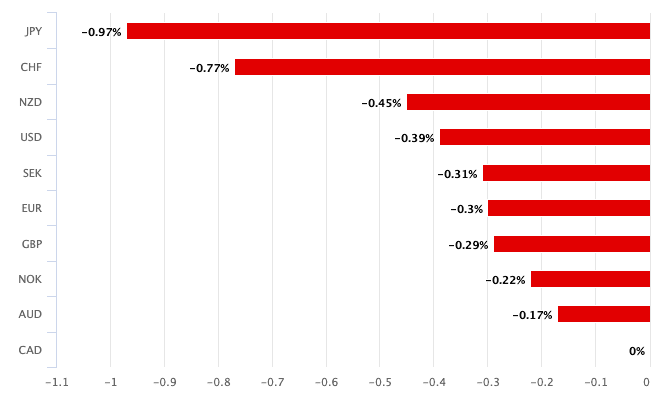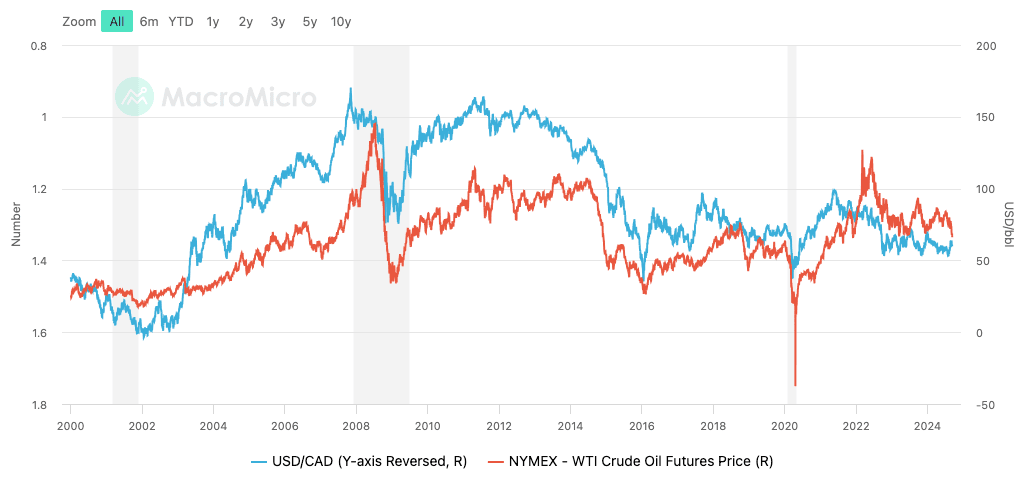
Above: CAD vs. the G10 on September 10.
The Canadian Dollar is under pressure against all its G10 rivals amidst a selloff in oil and commodities.
The Pound to Canadian Dollar exchange rate rallied a third of a per cent to 1.7775 after the price of WTI crude slipped 4.45% to $65/barrel, with Brent crude heading lower by 4.0% to 68.82. The U.S. Dollar-Canadian Dollar is 0.34% higher at 1.36.
The Canadian Dollar has an on-off correlation with oil markets owing to Canada's significant crude exports. While the relationship has been weak of late, it appears the size of the current slump can't be ignored in an otherwise quiet day in FX markets.
"The further plunge in the oil price today probably reflects news that OPEC revised down its 2024 and 2025 forecasts for oil demand, mostly on the back of weaker demand from China. That is in line with earlier data out of China which showed crude oil imports are down year over year," says Diana Iovanel, Senior Markets Economist at Capital Economics.
Going forward, Capital Economics expects a continued weakness in oil demand, primarily coming from China in the coming quarters, to keep weighing on the price of oil.
Crude oil exports account for 10% of Canada's GDP, and USD/CAD and the oil price have a positive correlation over longer-term timeframes.
Norbert Rücker, Head of Economics & Next Generation Research at Julius Baer, says the tone of the oil markets remains downbeat.
"The petro-nations postponed the supply normalisation but the news only received a lukewarm response. The fundamental headwinds should persist. Demand is partially stagnant, production grows in the Americas, and the oil market likely heads into surplus supplies next year," he says.
Julius Baer maintains a Neutral view on oil as an investment class and trims its 3- and 12-month price targets to $75 and %70 to realign with our quarterly forecast curve.
"Oil politics remain a long-term wild card, the pronouncedly bearish market mood brings short-term reversal risks," says Rücker.

